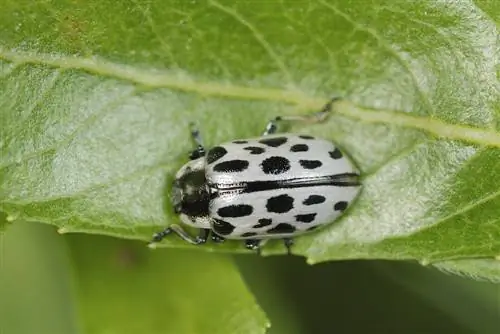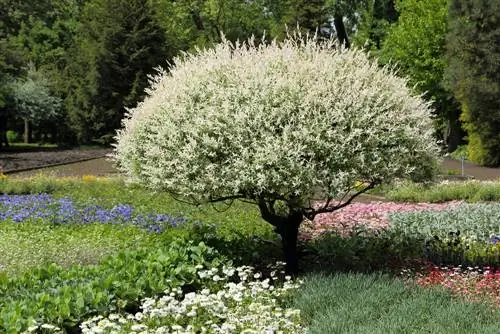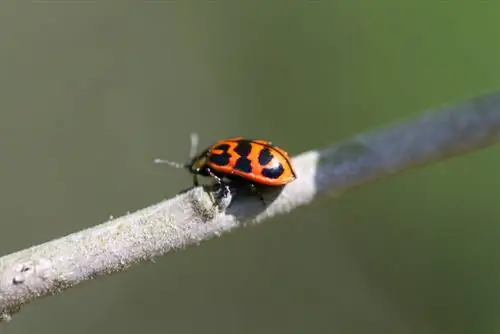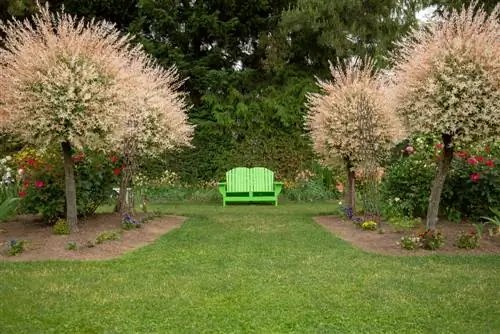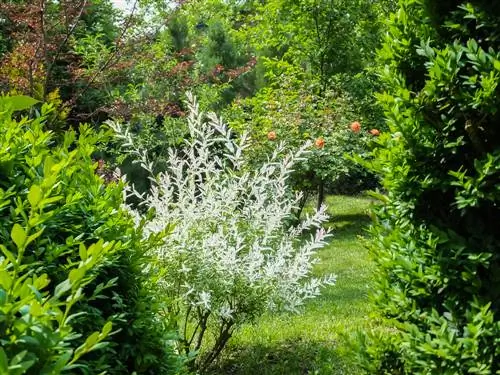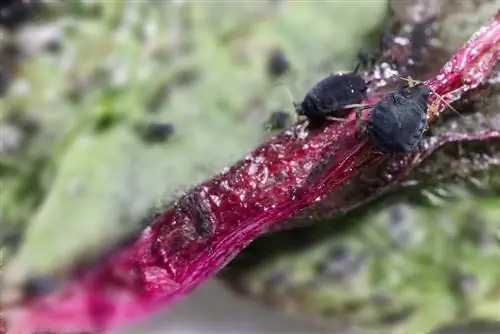- Author admin [email protected].
- Public 2024-01-05 20:48.
- Last modified 2025-01-23 11:21.
Actually, harlequin willows are not naturally very susceptible to disease. Parasites or pests still like to spread on the ornamental tree and sometimes cause a lot of damage. In this case you have to act quickly. Early detection of symptoms is the be-all and end-all. On this page you will find help if you are unsure which pest it could be. Of course, you will also find out how best to deal with the parasite.
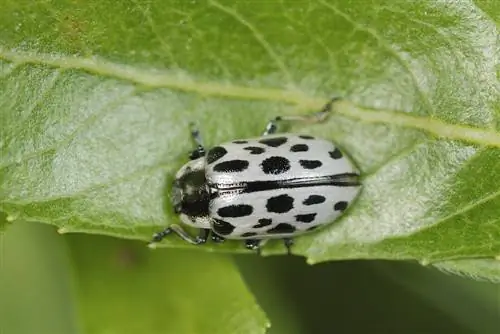
Which pests attack the harlequin willow and how do you combat them?
Pests such as the willow leaf beetle, rust or willow anthracnose can occur on harlequin willows. To combat this, regular checks, the removal of diseased branches and, if necessary, the use of fungicides are recommended. Natural enemies such as birds can also help.
Common Pests
- the willow leaf beetle
- Rust
- Willow Anthracnose
The willow leaf beetle
The willow leaf beetle leaves strong feeding marks on the pasture. If the infestation is severe, it even eats all the leaves, so that the tree ultimately becomes bare. You can also see the orange eggs that it lays on the leaves.
When it comes to treatment, prevention is the best medicine. Check the ornamental willow regularly to detect the pest in its early stages and prevent the worst. Although fungicides help with advanced infestations, you should still rely on natural remedies. Trust in nature, because birds like to eat the beetle from the leaves. Once the willow leaf beetle damages the appearance of the tree, the harlequin willow usually recovers from the infestation after some time.
Fungal infestation
Rust and willow anthracnose are two types of fungi. You can recognize the pests when the shoots, branches and leaves of the harlequin willow turn brown or black. The diseases can be treated in a similar way to the willow leaf beetle with fungicides and the prevention of an outbreak. It is imperative that you completely remove any diseased branches.
Important Tips
- Never dispose of the cut branches in the compost.
- First check the pasture for care errors such as watering, fertilizing, pruning and location.
- Use chemical agents only in extreme emergencies.

